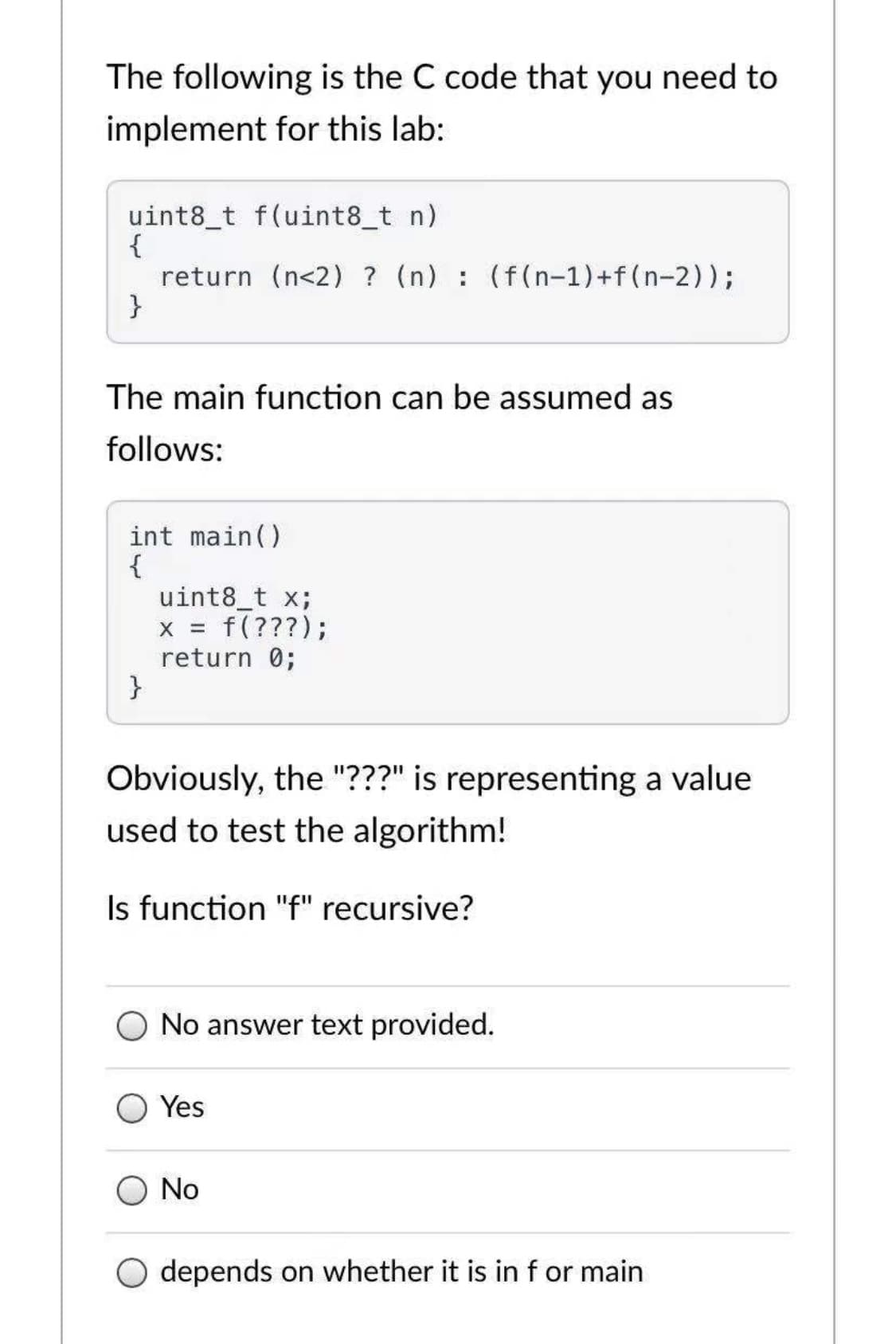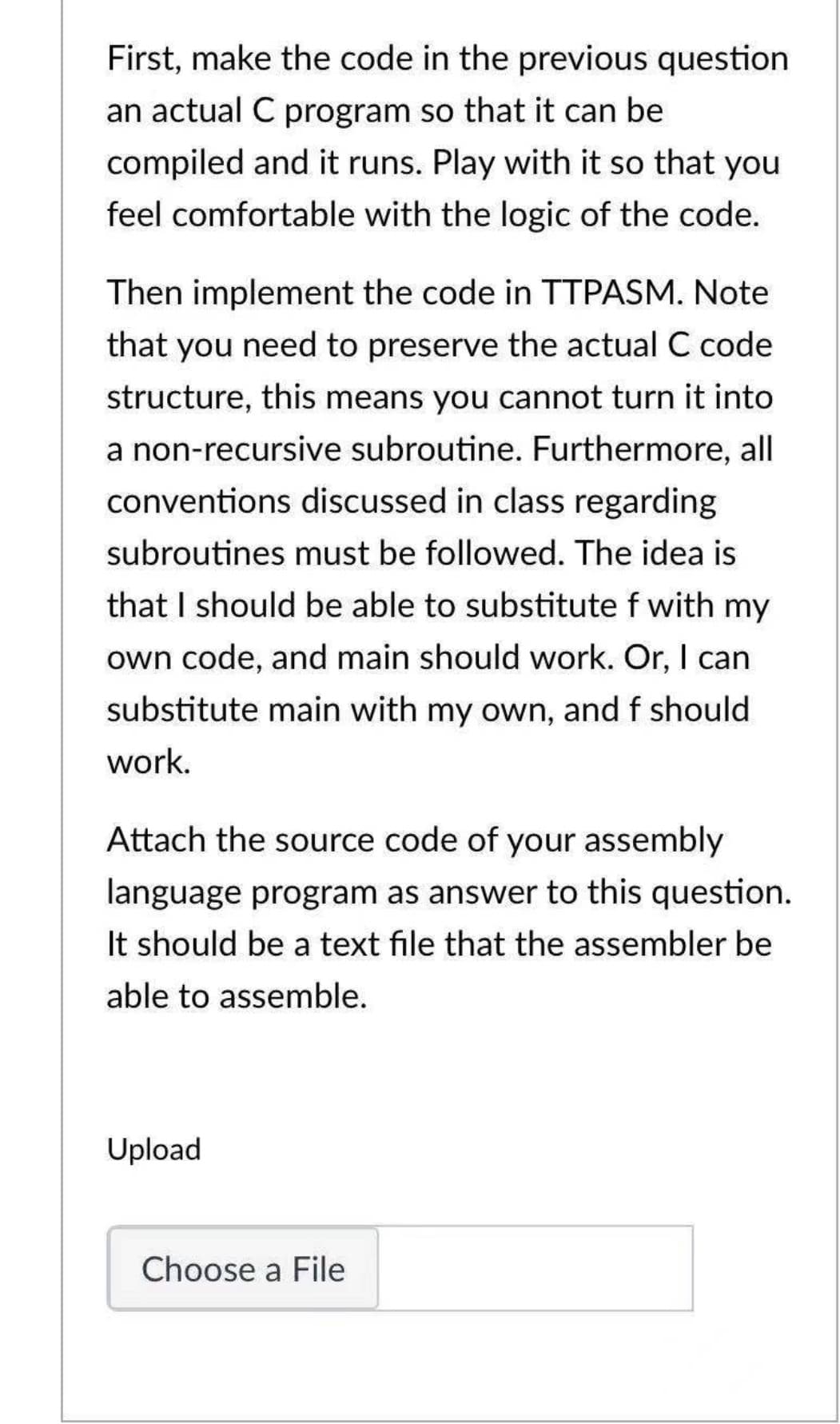.The following is the C code that you need to implement for this lab: uint8_ t f(uint8_tn) return(n<2)?(n):(f(n-1)+f(n-2)); The main function can be assumed as follows: int main() uint8_ t x; x=f(???); return 0; Obviously, " ? ? ? " is representing a value used to test the algorithm! Is "f"recursive? a.No answer text provided. b.Yes c.no d.depends on whether it is in for main
1.The following is the C code that you need to implement for this lab:
uint8_ t f(uint8_tn)
return(n<2)?(n):(f(n-1)+f(n-2));
The main function can be assumed as follows:
int main()
uint8_ t x;
x=f(???);
return 0;
Obviously, " ? ? ? " is representing a value used to test the
Is "f"recursive?
a.No answer text provided.
b.Yes
c.no
d.depends on whether it is in for main
2.First, make the code in the previous question an actual C program so that it can be compiled and it runs. Play with it so that you feel comfortable with the logic of the code.
Then implement the code in TTPASM. Note that you need to preserve the actual C code structure, this means you cannot it into a non-recursive subroutine. Furthermoreall conventions discussed in class regarding subroutines must be followed. The idea is that I should be able to substitute f with my own code, and main should work. Or, I can substitute main with my own, and f should work.
Attach the source code of your assembly language program as answer to this question. It should be a text file that the assembler be able to assemble.
Upload
Choose a File


Trending now
This is a popular solution!
Step by step
Solved in 2 steps




